A clean, well-tuned carburetor is a key factor in the performance of your Honda Foreman ATV and nothing makes cleaning carburetors faster, safer and easier than an ultrasonic cleaner. Whether you operate a Honda Foreman ATV service shop or do it yourself, you’ll be amazed at just how thorough an ultrasonic cleanerul can be in removing varnish, grease, oil and other contaminants from one of the most intricate assemblies on your Honda Foreman ATV.
Ultrasonic cleaners are used in a wide range of applications to remove virtually any soil or contamination by using the power of cavitation action. This is the term used to describe the implosion of billions of minute bubbles contacting carb parts being cleaned. The bubbles are created by generator-powered ultrasonic transducers bonded to an
ultrasonic cleaning tank and typically operate at an ultrasonic frequency of 37 to 42 kHz (37,000 to 42,000 cycles per second).
When the bubbles implode contaminants are quickly and safely blasted away from wetted surfaces without damaging delicate carb parts. So tiny are the bubbles that they penetrate minute cracks, crevices and blind holes impossible to reach by hand scrubbing using conventional parts washers or aerosol sprays The ultrasonic parts washer will complete the job in less than an hour, meanwhile freeing you up to attend to other tasks. And it will do it in an environmentally friendly manner because the ultrasonic carburetor cleaning formula is a biodegradable concentrate that minimizes disposal problems.
Ultrasonic carb cleaners come in a variety of sizes from bench top units to a floor-mounted
industrial ultrasonic cleaning machine, so you can select any size you need. Our most popular 1½ gallon models for cleaning one carburetor at a time are the TOV150-6L and Eh250EL. Select an ultrasonic carb cleaner equipped with a heater to improve the ultrasonic carburetor cleaning process.
Our most popular 1½ gallon models for cleaning one carburetor at a time are the TOV150-6L and Eh250EL. Select an ultrasonic carb cleaner equipped with a heater to improve the ultrasonic carburetor cleaning process.
Whatever the model and size ultrasonic carb cleaner you use there are steps to take before cleaning begins.
Step 1: Removing the Carburetor
First, remove the fenders and take out the seat. Take out the airbox to get a good look at the carburetor. Unscrew the bolts and pull the gas tank off. From the top of the throttle linkage, unscrew the throttle cable. Remove the other end of the throttle cable from the carb.
Take out the airbox to get a good look at the carburetor. Unscrew the bolts and pull the gas tank off. From the top of the throttle linkage, unscrew the throttle cable. Remove the other end of the throttle cable from the carb.
Unscrew the top and drag the end of the cable out. The needle and slide connected to the cable should pull right off. Remove the black plastic cover on the side of the carburetor by unscrewing it. Unscrew the plastic nut from the carb and pull the choke cable out. Once the choke cable is out, the carb heater will unplug at the wiring harness. After the following steps, the carb should come off easily with just a few pulls and turns.
You now hold in your hand, your Honda Foreman carb.
Congratulations! You have successfully removed your Honda Foreman carb from your ATV! You may now proceed with the next step.
Step 2: Cleaning the Carburetor
Although you can clean your carburetor without any disassembly you will achieve the most thorough cleaning with partial disassembly to allow the solution into the float chamber. Remember that only surfaces that are wetted by the cleaning solution will be cleaned. Fine mesh baskets can be used to hold very small parts.
Remember that only surfaces that are wetted by the cleaning solution will be cleaned. Fine mesh baskets can be used to hold very small parts.
Set the thermostat to 70°C. While the solution is heating, place your carburetor parts in the basket taking care that they do not touch each other. Once the operating temperature is reached lower the basket into the cleaning solution and set the timer for 40 minutes. Cleaning time depends on the condition of the carburetor and may have to be adjusted.
At the end of the cycle remove the components from the bath. If they are not clean replace them in the bath until the cleaning is complete. Then rinse them in fresh water to remove all traces of the cleaning solution and allow them to dry.
Safety note: DO NOT reach into an operating ultrasonic bath. Instead remove the basket if you want to inspect or rearrange the parts.
Step 3: Reinstalling the Carburetor
Return your Honda Foreman ATV carb to its original position, making sure to screw the nuts and bolts holding it into the assembly. After the carburetor is secure, plug the carb heater wires back into the harness. Return the choke cable by screwing the plastic nut back on the carb. Push it in and make sure it stays in place. Screw the plastic cover back on.
After the carburetor is secure, plug the carb heater wires back into the harness. Return the choke cable by screwing the plastic nut back on the carb. Push it in and make sure it stays in place. Screw the plastic cover back on.
Return the other end of the throttle cable to the carb. Insert the needle and slide connected to the cable on top of your Honda Foreman carburetor. Make sure it stays in place then once it won’t budge, screw the top tightly back on. Return the throttle cable to the top of the throttle linkage exactly where you found it.
After this, a few more steps must be done. Screw the gas tank tightly back on the ATV. Return the airbox so that the carburetor remains hidden. Now for the last step, put the fenders back and install the seat.
Admire the piece of work you just put back together.
Voila! Start the engine, and your Honda Foreman ATV should be good to go.
Oils that rise to the surface of the bath should be skimmed off and disposed of properly. When the solution becomes discolored or cleaning time takes longer it is time to replace it. Drain the tank and dispose of the spent solution according to local regulations. Take the time to remove sludge that settled to the bottom of the tank. Clean the tank using a cleaning process recommended by the manufacturer.
When the solution becomes discolored or cleaning time takes longer it is time to replace it. Drain the tank and dispose of the spent solution according to local regulations. Take the time to remove sludge that settled to the bottom of the tank. Clean the tank using a cleaning process recommended by the manufacturer.
Questions: Contact the iultrasonic ultrasonic cleaning experts at 973 821-4400
Disclaimer: This advice is not provided by a licensed mechanic. Follow at your own risk. We assume no liability for any damages caused by following the advice in this article.
Last updated:
ATV Carburetor Adjustment involves tuning your ATV’s carb for maximum performance. How do I know my jetting is off? My ATV bogs down a lot, is jetting to blame? I have performance parts, what now? These are all common questions so lets get you up to speed on ATV carburetor adjustment.
You can tune your own ATV jets and avoid common jetting mistakes if you understand some jetting basics, explained below. A comprehensive installation guide will come with the jetting kit you purchase for your make and model of ATV so instead this guide will focus on explaining the basic principles of how ATV jets work. How jetting works…
#1 – The first thing you need to remember is that ATV jetting refers to throttle position, not engine rpm. Each jet is effective for a specific throttle position range. The pilot jet, or pilot screw as it is sometimes referred to, controls the flow of fuel between Idle speed and about one eight of wide open throttle (WOT). The needle jet controls the flow of fuel from the one eight position up to about the three quarter throttle position. Lastly your main jet controls the flow of fuel between the three quarter and wide open throttle positions.
#2 – The second thing you need to know is that aftermarket performance parts will change your jetting requirements. Increased engine performance usually means an increased demand for fuel so learning ATV carburetor adjustment techniques is important.
Increased engine performance usually means an increased demand for fuel so learning ATV carburetor adjustment techniques is important.
Other factors that affect jetting are rev limiters, altitude and fouled plugs if your jetting is off. Altitude directly affects engine performance because the higher you go from sea level the thinner the air gets.
The pilot jet, also referred to as pilot screw, controls carburetor fuel/air mixture between Idle and 1/4 throttle. Turning the screw IN makes the fuel/air mixture leaner. Turning the screw OUT makes the fuel/air mixture richer. Lean means less gas, rich means more gas.
Every jet is identified by a number and that number relates directly to the size of the opening inside the jet. Again smaller is leaner, larger is richer. When jetting your carb if you find that you need to turn the pilot jet all the way in to improve response then you likely need to switch to a smaller number of screw.
If on the other hand you need to turn it more than 2.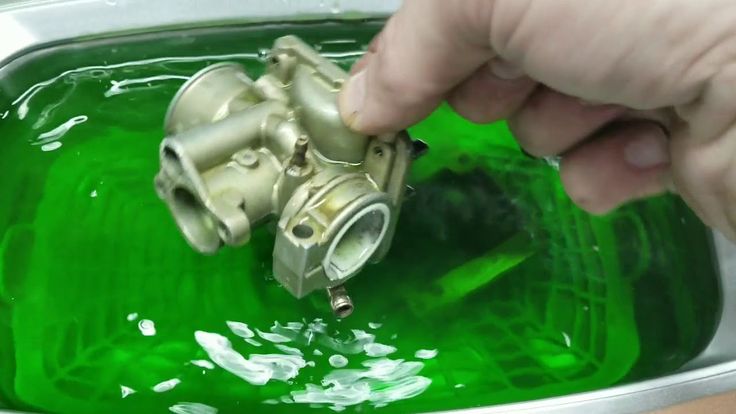 5 turns out you likely need a larger numbered screw. When your engine bogs down at the smallest increase in throttle position your pilot jetting is likely too rich.
5 turns out you likely need a larger numbered screw. When your engine bogs down at the smallest increase in throttle position your pilot jetting is likely too rich.
The needle jet and its needle controls the fuel/air mixture from the 1/8th throttle position all the way up to the 3/4 throttle position. The needle within the needle jet is a long tapered pin. As you increase the throttle position the pin pulls out of its jet allowing the fuel/air mixture to become richer. There are several different shapes and diameter of needles/needle jets but the needle jet is often left alone during tuning as it doesn’t affect idle or top end performance. The same rich/lean characteristics apply as with the pilot screw.
The main jet controls the fuel/air mixture from 3/4 throttle position up to wide open throttle. Again the main jet is numbered and a larger number indicates a larger hole and a richer mixture. A stock engine will perform well with a stock main jet but once engine performance parts are added its likely that you will need to revisit at least the main jet of your carburetor. Different performance part combinations will create different demands from your carburetor. Anything that increases horsepower will also increase fuel demand.
Different performance part combinations will create different demands from your carburetor. Anything that increases horsepower will also increase fuel demand.
All the performance parts in the world won’t improve performance if you don’t tune your carb. If you have a rev limiter in place you may need to tune or upgrade that as well because a rev limiter will tend to bog down the engine at full throttle. Make sure to follow the instructions included with most jetting kits.
Now that you, hopefully, understand a bit more about the basics of how ATV carburetor parts work these are the steps to take if you’re in a jam on the trails. Blockage, damage, fuel contamination, mud in the air intake system and other conditions can cause your ATV carburetor to be unable to deliver the right amount of fuel to your ATV engine. You always want to tune your ATV carburetor at home or in the shop but that’s not always possible. If you’re in a jam, this is what you can do.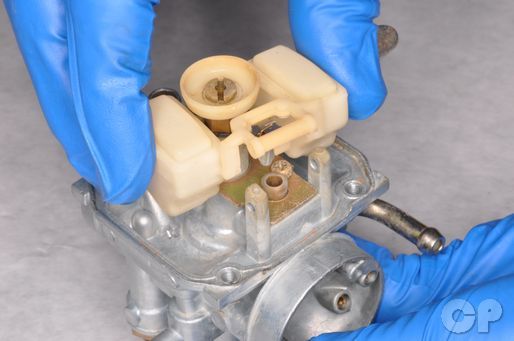
 Do not turn it outwards or it will eventually fall out. Inward to start, all the way in but don’t force it too tightly.
Do not turn it outwards or it will eventually fall out. Inward to start, all the way in but don’t force it too tightly. A flooded condition will require time for the fuel to evaporate.
A flooded condition will require time for the fuel to evaporate.Carburetor jets control the amount of fuel which is mixed with air inside the throttle body of your carburetor. This carburetor jet size chart shows you how effective each jet is at specific throttle levels. A Pilot jet is effective at idle speed up to 1/4 throttle(low-range). A needle jet is effective from 1/4 throttle to 3/4 throttle(mid-range). A main jet is effective from 3/4 throttle up to wide open throttle(top-end).
This carburetor jet size chart shows you how effective each jet is at specific throttle levels. A Pilot jet is effective at idle speed up to 1/4 throttle(low-range). A needle jet is effective from 1/4 throttle to 3/4 throttle(mid-range). A main jet is effective from 3/4 throttle up to wide open throttle(top-end).
When diagnosing a carburetor or tuning problem look at the jet responsible for the range in which the problem is occurring.
ALWAYS follow the manufacturer’s specifications whenever possible. Jet size is usually stamped onto the jet itself, typically in milimeters(mm), ranging from small to large. Changing a carb jet for a smaller sized jet will reduce fuel flow. Likewise, installing a larger jet will increase fuel flow and may help a performance engine run more smoothly. Note: an engine that runs rich is less likely to sustain heat damage than and engine that runs lean.
I hope that this carburetor tuning guide helps you understand how jets work so that you can best dial in your ATV for maximum performance(and fun!).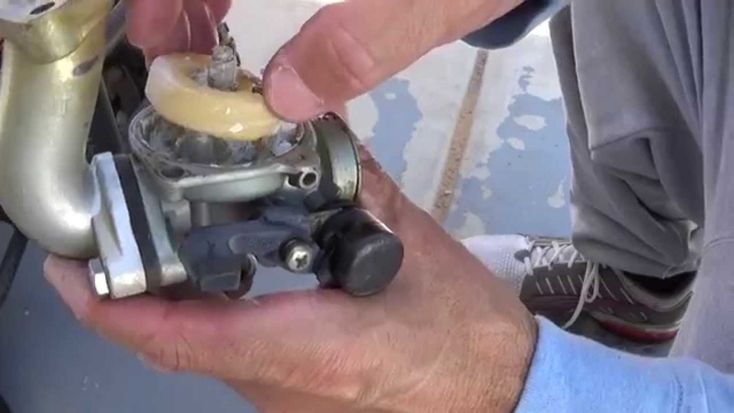
 Additional adjusting may be required.
Additional adjusting may be required.Carburetor jets become clogged naturally over time and a periodic carburetor cleaning is required. Always consult with your ATV owner’s manual for specific maintenance instructions. Always check the fuel lines, filter and gas tank for contaminants and clean as required at the same time to avoid further clogging.
The majority of carburetor problems are a result of blockage and worn out parts. Troubleshooting a clean ATV carburetor is also much easier than troubleshooting a dirty carb. Typical tools required include a flat head screw-driver, compressed air, an 8mm wrench and carburetor cleaner. Note: Some gaskets and plastic components will swell if exposed to carb cleaner so remove these prior to use.
It often seems like an insurmountable task for beginners to tune and adjust the carburetor of an ATV, but in fact, it is far from being the case.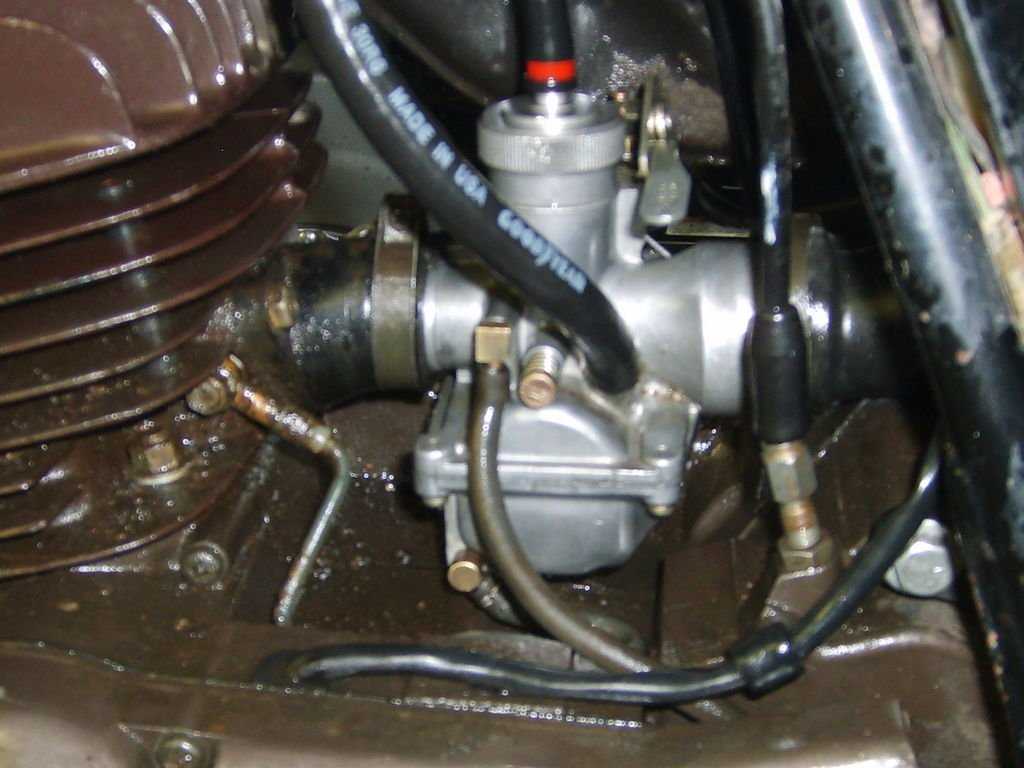 Using our instructions, you can easily set up a carburetor with your own hands.
Using our instructions, you can easily set up a carburetor with your own hands.
Due to incorrect carburetor settings, problems such as: acceleration dips, jerks while driving, uncertain start of the engine, poor acceleration dynamics, overheating, loss of power, increased fuel consumption, formation of deposits in the combustion chamber.
So what exactly are we going to tune?
Attention! The adjustment is carried out under the condition of a warm engine and a clean carburetor.
First, make sure there is no condensation in the carburetor. First, you need to drain the gasoline from the float chamber, for this you need to close the fuel cock and partially unscrew the screw No. 1, after the gasoline has drained from the float chamber, tighten the screw No. 1.
1.
Let's look at photos of candles with various deposits and defects.
A 100% indicator of a correctly adjusted combustible mixture is carbon deposits on a candle.
Consider the location of the screws for adjusting the quality of the mixture and idle speed of carburetors of different models.
#1 Float chamber plug; No. 2 Mixture quality screw;
#3 Idle adjustment screw.
1 - quality adjustment screw at idle; 2 - fuel inlet fitting; 3 - fitting through which you can sleep fuel from the float chamber; 4 - screw-plug of the float chamber.
1 - ventilation tube; 2 - idle speed adjustment screw; 3 - screw for adjusting the composition of the air-fuel mixture.
ATV carburetor speed and mixture adjustment.
1. Start and warm up the engine until it reaches operating temperature.
2. Adjust the idle screw to set the idle speed to normal. Completely, until it stops, tighten the fuel mixture screw, the engine should stall. If this does not happen, check the tightness of the air supply system from the air filter.
3. Loosen the fuel mixture screw 1 turn. (Turning the screw clockwise, we enrich the mixture, unscrewing it counterclockwise, we lean).
4. Start the engine and, by adjusting the idle speed screw, set the speed slightly higher than normal
5. Slowly unscrew the fuel mixture screw until the engine reaches maximum speed (we unscrew the screw no more than 2 turns, but depending on engine wear and other malfunctions, the range may vary).
6.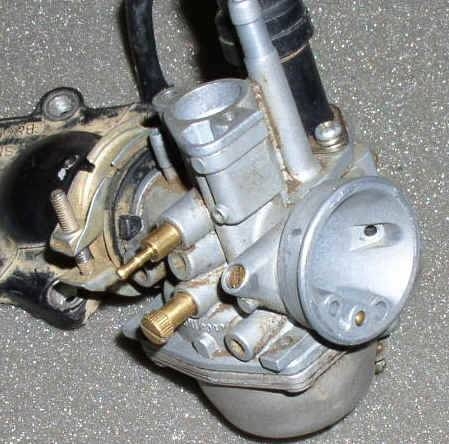 Re-adjust the idle screw to set the idle speed to normal.
Re-adjust the idle screw to set the idle speed to normal.
7. Press the throttle trigger several times, check if the idle speed is stable.
Adjustment of the mixture quality with a needle.
Probably you have heard more than once about adjusting the quality of the mixture on the carburetor by manipulating the needle. I note that these are extreme measures, for the initial adjustment, use the mixture quality screw, and only if you do not get the desired result, unscrew the mount and remove the needle. What does she represent? This is the main element that regulates the amount of gasoline supplied to the combustion chamber. Connected directly to the throttle handle through a cable. When you turn the knob, the needle rises higher, opening up a channel for fuel, thereby delivering more mixture, which increases power, which translates into speed.
You will see 5 grooves on the needle at the attachment point. Initially, the retaining ring fixes it in the central position, this is the best option. But sometimes it is not possible to achieve the required quality of the mixture. Then we will need the remaining grooves, 2 on top and 2 on the bottom, this suggests that we can adjust the dose gradually.
But sometimes it is not possible to achieve the required quality of the mixture. Then we will need the remaining grooves, 2 on top and 2 on the bottom, this suggests that we can adjust the dose gradually.
Lifting the retaining ring up and locking it in this position lowers the needle, which, in turn, blocks the channel more than usual. Gasoline enters less than air, and the mixture becomes leaner. Lowering the ring down, we raise the needle, and everything happens exactly the opposite.
Be aware that an excessively lean or rich mixture can lead to serious malfunctions from overheating to loss of power, carbon deposits in the combustion chamber and all the consequences that follow from this. Keep an eye on the condition of the spark plug electrodes, this is the main indicator that will help you determine the quality of the mixture.
If you have any questions about the adjustment and tuning of the carburetor, you can ask them below in the "Comments" column.
How to adjust the carburetor on an ATV? What to pay attention to? What are the signs of misuse of the device? About this today in our article. Using the proposed instructions, you will be able to set up the carburetor step by step without the help of specialists.
For stable operation of the ATV, it is necessary that the engine receives the optimal amount of combustible mixture corresponding to its rev range. Otherwise, the following problems may occur:
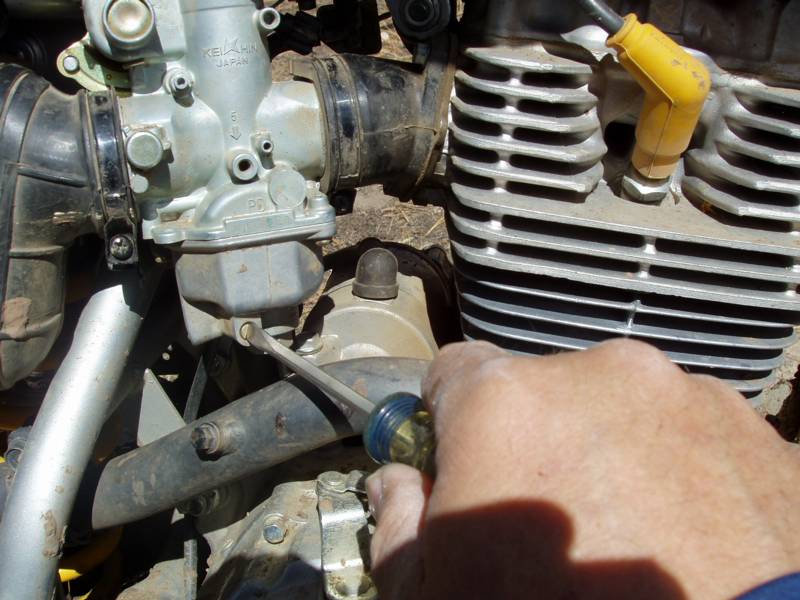
What should be applied in this case:
Important! Carry out tuning only when the carburetor is cleaned outside and inside, as well as when the engine is warmed up to operating temperature.
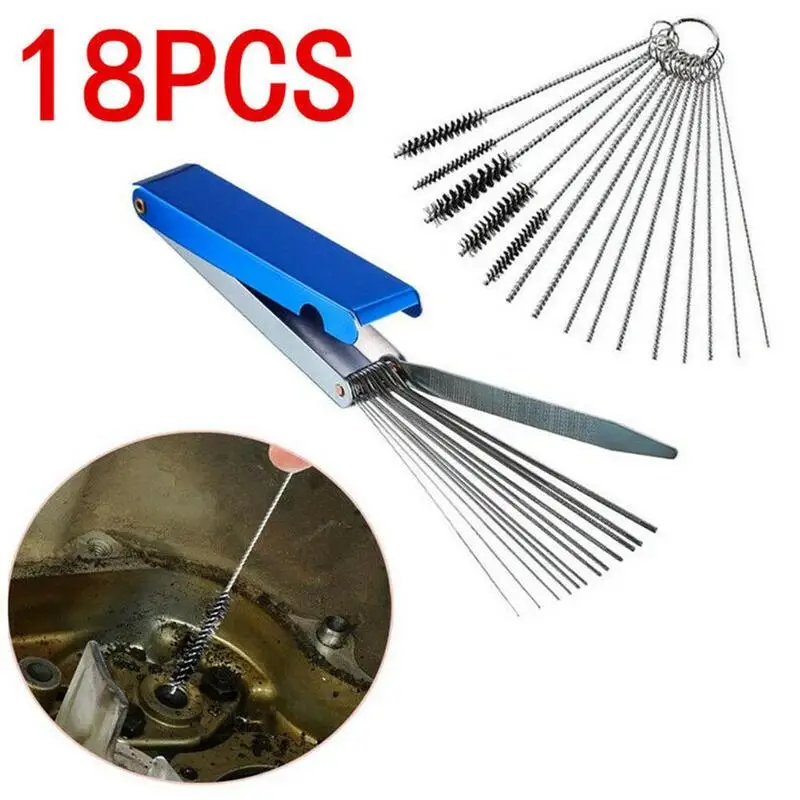 Check. Then turn bolt #2 one turn. The enrichment of the mixture occurs in a clockwise direction, depletion - against.
Check. Then turn bolt #2 one turn. The enrichment of the mixture occurs in a clockwise direction, depletion - against. Note. The location of the bolts on each carburetor model may vary, so read the instructions that came with your machine.
1. Start the ATV and test ride. Wait until the engine has completely cooled down.
2. Check the condition of the spark plug. To do this, unscrew the cap and inspect the candle.
What to look for:

3. Unscrew the needle cover at the top of the carburetor. Pull the needle. This is the main element that regulates the supply of fuel to the combustion chamber, since the needle is connected to the gas trigger. When the trigger is pressed, the needle rises, slightly opening the hole for supplying the fuel mixture. This directly affects the growth of power and speed of the ATV.
4. Remove the cable, then press the needle to pull it out. The needle has 5 grooves and a retaining ring. By default, it is set to medium. The lower the retaining ring is located, the higher the needle is raised, which means that a lot of gasoline and little air is supplied. Accordingly, the higher the ring - the less gasoline and more air.
Accordingly, the higher the ring - the less gasoline and more air.
5. Reposition the circlip in the desired direction to optimize carburetor performance. Insert the needle into place.
6. Start the engine and press the throttle trigger. With proper adjustment, the engine should not stall from a sharp pressure.
And remember, you should resort to adjusting the needle only as a last resort, when adjusting the quality and quantity screw does not bring results.
The performance of a four-wheeler depends on the correct level of gasoline in the carburetor. An excessive amount will flood the candles, spill onto the ground and lead to unnecessary expenses. If there is too little fuel, the engine simply will not start.
How to optimize the fuel supply
